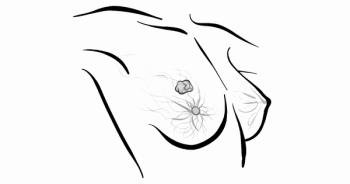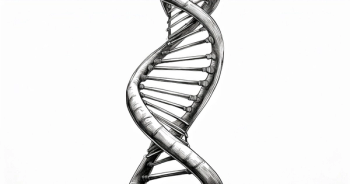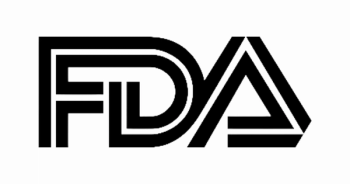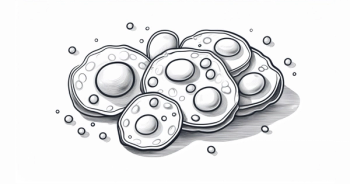
Ruxolitinib Shows Promise in Preventing GVHD in Myelofibrosis
A phase 2 study evaluated the use of ruxolitinib plus standard GVHD prophylaxis in patients with myelofibrosis undergoing transplant.
Adding ruxolitinib (Jakafi) to standard graft-vs-host disease (GVHD) prophylaxis reduced incidence of acute and chronic GVHD while maintaining survival rates in patients with myelofibrosis undergoing hematopoietic cell transplantation (HCT), according to data presented at the 2025 Transplantation & Cellular Therapy Meetings.1
The phase 2 prospective study (NCT04384692) conducted at Fred Hutchinson Cancer Center showed grade II to IV acute GVHD occurred in 32% of patients receiving peri-transplant ruxolitinib, whereas it occurred in 71% in a pre-transplant ruxolitinib group of a similar preliminary study. The percentage of patients with chronic GVHD at 1 year with peri-transplant ruxolitinib 12%, whereas it was 25% with pre-transplant ruxolitinib. These rates of GVHD also coincided with high overall survival (OS) rates at year 1 and 2 of 100% and 87%, respectively, in the peri-transplant ruxolitinib trial.
“The incidence of acute and chronic GVHD was markedly reduced without the expense of non-relapse mortality, relapse, or survival. It doesn't appear that infections or transfusion needs were increased,” Rachel B. Salit, MD, associate professor at Fred Hutchinson Cancer Center, said in her presentation.
Janus kinase (JAK) inhibitors prevent activation of the JAK domain by binding to the kinase, in turn preventing STAT phosphorylation and translocation of the nucleus. This process reduces the production of pro-inflammatory cytokines. GVHD pathogenesis has shown to be affected by the JAK-STAT pathway, and JAK signaling is key in the process leading to tissue damage and inflammation.
In previous trials of ruxolitinib, such as COMFORT-I (NCT00952289) and COMFORT-II (NCT00934544), this JAK inhibition showed significantly better results in reducing symptoms and splenomegaly compared with best available therapy in patients with myelofibrosis. Additionally, the REACH1 (NCT02953678), REACH2 (NCT02913261), and REACH3 (NCT03112603) trials demonstrated significantly improved response with ruxolitinib vs best available therapy when treating patients with acute and chronic GVHD.
The preliminary study (NCT02251821) of ruxolitinib pre-transplant showed improved survival in this patient population. With a median time of 7 months on ruxolitinib, 38% of patients had more than a 10% decrease in spleen size and 36% were stable. In patients with symptoms prior to ruxolitinib, 55% had stable or improved symptoms by the time of HCT.
Patients who received pre-transplant ruxolitinib (n = 61) and patients from historical data (n = 167) had similar rates of grade II to IV GVHD at 71% and 68%, respectively, and had similar rates of grade III to IV GVHD at 19% and 18%. In the ruxolitinib arm, the 2-year survival rate was 79% vs 60% according to historical data. The 5-year survival rate for patients given ruxolitinib was 74% compared with historical data at 57%. Relapse in these groups was similar between the 2 groups.
In the phase 2 trial investigating GVHD prevention in 25 patients with myelofibrosis undergoing HCT, the primary end point was determining whether adding ruxolitinib to standard tacrolimus and methotrexate GHVD prophylaxis would decrease incidence of grade II to IV GVHD at day 100. Secondary end points included whether a decrease in chronic GVHD would be observed without compromising relapse, non-relapse mortality, and OS when adding ruxolitinib to standard prophylaxis in these patients.
Ruxolitinib was given 8 weeks or more before HCT and was tapered 2 weeks before transplants. Myeloablative conditioning starting 7 days before transplant with cyclophosphamide and 4-day busulfan or reduced-intensity conditioning starting 5 days before transplant with fludarabine and melphalan were given to patients. By day 4 prior to HCT, ruxolitinib had to be tapered to 5 mg twice daily. Tacrolimus was given the day prior to HCT until day 220 after HCT, and methotrexate was given on days 1, 3 6, and 11 after HCT. Ruxolitinib was continued through cell infusion until 2 months after discontinuing tacrolimus.
Patients enrolled on this trial had to have a diagnosis of primary or secondary myelofibrosis, intermediate-1, -2, or high-risk disease, HCT-specific Comorbidity Index of 5 or less, and basic organ function criteria. Donor options for these patients included human leukocyte antigen (HLA)-matched sibling donor, 10 of 10 HLA-matched unrelated donor, 1 allele-mismatched unrelated donor, and umbilical cord blood units, and peripheral blood was preferred over bone marrow.
After day 28 post-transplant, ruxolitinib could be increased to 10 mg twice daily if the patient had engrafted and were tolerating the 5-mg ruxolitinib dose. Ruxolitinib could also be decreased to 5 mg once daily if the 5-mg twice daily dose was not tolerated. The treating physician could be continue or discontinue/taper ruxolitinib if the patient developed GVHD of grade II or high and required systemic immune suppression. Ruxolitinib was continued if topical therapy only was required.
In terms of dose modifications, all patients were on 5 mg of ruxolitinib twice daily at 4 days before HCT. There were 6 patients who went from 5 mg twice daily to once daily between days 0 to 100 because of cytopenia. In that same time frame, 7 patients increased to 10 mg twice daily of ruxolitinib for cytopenia or other toxicity. One patient paused ruxolitinib and was given prednisone, then went back on ruxolitinib at 10 mg twice daily, continuing for 9 months.
Patients on this trial were a median age of 66(range, 42-71), and 64% were male. Sixty percent of patients had primary myelofibrosis and 40% had secondary myelofibrosis. There were 68% of patients who were JAK2 positive. Over half of the patients had Dynamic International Prognostic Scoring System (DIPSS) intermediate-2 disease, 24% had DIPSS intermediate-1, 16% had DIPSS high, and 4% had DIPSS low. The average time on ruxolitinib was 6 months, although it was only necessary to be on ruxolitinib for 8 weeks, Salit noted.
No patients had received cord blood, but 76% had unrelated donors and 24% had related donors. Reduced-intensity conditioning was used for 68% of patients and the rest received myeloablative conditioning.
With a median time to engraftment of 20 days, no patients experienced primary graft failure, but 1 patient had poor graft function. All patients had CD3 and CD33 chimerism on day 28 and day 100.
Acute GVHD grade II to IV was observed in 32% of patients and acute GVHD of III to IV in 8%. At 1 year, 12% of patients had chronic GVHD and none of the patients had moderate to severe chronic GVHD. Relapse at 1 year was seen in only 4% of patients, and there were 8% who were mutation positive at day 28 post-transplant, which dropped to 4% who were mutation positive at day 100.
Most infectious adverse events (AEs) were grade 3, in 20 out of 25 patients, and 4 patients had grade 4 AEs. Non-relapse mortality was 12% at 1 year.
In a non-randomized comparison of the pre-transplant ruxolitinib trial and the phase 2 peri-transplant ruxolitinib trial, Salit described some of the differences in the cohorts. The patients were approximately 10 years older in the peri-transplant group, and there were no cord blood recipients compared with 10% in the pre-transplant group. Otherwise, demographics and outcomes such as engraftment days, engraftment failure rates, red blood cell and platelet transfusions, and chimerisms were the same, but with the peri-transplant cohort having approximately half as much incidence of GVHD.
“We're currently looking at translational studies of GVHD biomarkers, STAT signaling, and disease modification with post-transplant ruxolitinib and optimizing dose timing and the tapering of the peri-transplant ruxolitinib are aims of future clinical trials,” Salit concluded.
Reference:
1. Salit RB, Ng K, Ratsamee N, et al. Phase II single center prospective study of ruxolitinib in addition to standard graft versus host disease prophylaxis in patients with myelofibrosis demonstrates encouraging outcomes. versus host disease prophylaxis in patients with myelofibrosis demonstrates encouraging outcomes. Presented at: 2025 Transplantation & Cellular Therapy Meetings; February 12-15, 2025; Honolulu, Hawaii. Abstract ID 38.










































